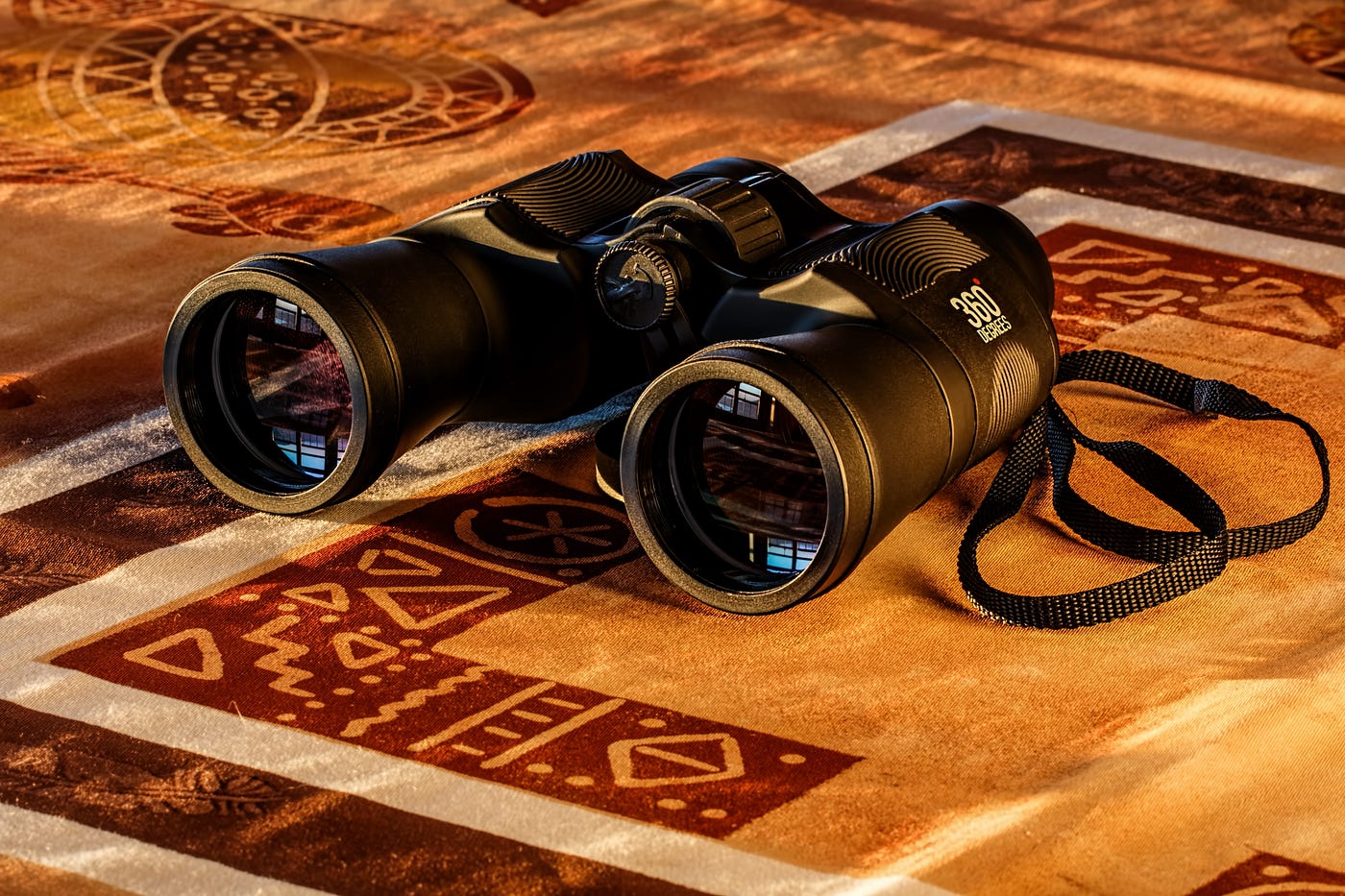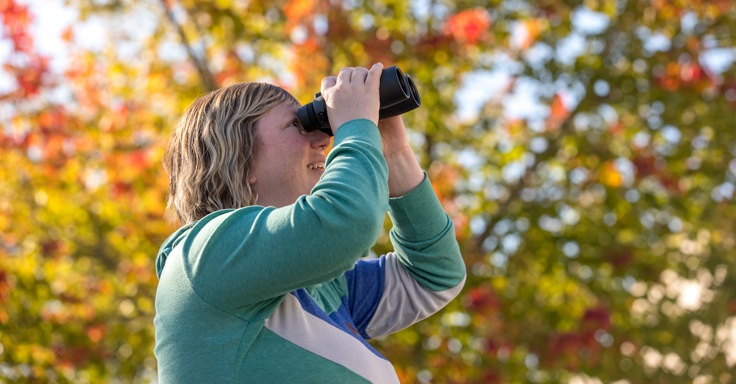Binoculars are handy tools for outdoor enthusiasts. They enhance your view of nature and distant objects.
Choosing the right binoculars can be tricky. There are many factors to consider before making a purchase. Whether you enjoy birdwatching, hiking, or stargazing, the perfect pair of binoculars can improve your experience. In this post, we’ll explore the key features to look for in binoculars.
Understanding these features will help you make an informed decision. The right binoculars can offer clear, sharp images and comfort during use. Let’s dive into the details and discover what makes a great pair of binoculars.

Credit: medium.com
Magnification And Objective Lens
When selecting binoculars, understanding the magnification and objective lens is crucial. These two features determine how well you can see objects at a distance. They also impact image brightness and field of view. Let’s explore these aspects in detail.
Choosing The Right Magnification
Magnification shows how much larger an object appears. For example, a 10x magnification means the object looks ten times closer. Higher magnification offers a closer view. But it can also make the image shakier and reduce the field of view. Choose a magnification that suits your needs. For general use, 8x or 10x is ideal. Birdwatching or stargazing may require higher magnification.
Understanding Objective Lens Size
The objective lens size affects the image brightness. Larger lenses let in more light, making images clearer and brighter. This is especially helpful in low light conditions. The size is measured in millimeters and is the second number in the binocular description. For instance, in 10×42 binoculars, 42 is the objective lens size. Remember, larger lenses can make the binoculars heavier. Balance image quality with comfort. For daytime use, lenses between 30mm and 42mm work well.
Field Of View
When choosing binoculars, one of the key aspects to consider is the field of view. Field of view refers to the width of the area you can see through the binoculars. A wider field of view can enhance your overall viewing experience.
Importance Of Wide Field Of View
A wide field of view allows you to see more of the scene at once. This is especially useful for bird watching, sports events, and nature observation. You can quickly spot and follow moving objects. It reduces the need for constant adjustment.
How Field Of View Affects Usage
The field of view impacts your comfort and efficiency. A narrow field of view can make it harder to locate and track subjects. It may require more frequent repositioning. On the other hand, a wider field of view provides a broader perspective. You can see more without moving the binoculars.
This is particularly beneficial in dynamic environments. For example, watching wildlife or a fast-paced game. It offers a more immersive viewing experience. Consider the field of view when selecting your binoculars. It can greatly influence your satisfaction and ease of use.
Lens Coating
Lens coating is crucial for binoculars. Look for multi-coated lenses to enhance light transmission and reduce glare. This ensures brighter, clearer images.
When you’re shopping for binoculars, lens coating is one of the most important features to consider. It impacts how clear and bright the images appear. A good lens coating can make a world of difference, especially in low light conditions. Let’s dive into the details.Types Of Lens Coatings
Binoculars come with different types of lens coatings. The simplest is a single-layer coating, which reduces some glare but not as effectively. Multi-coated lenses have multiple layers of coatings on at least one lens surface. The best option is fully multi-coated lenses. These have multiple layers on all air-to-glass surfaces. This type of coating significantly enhances light transmission and reduces reflections. So, why does this matter to you? The quality of the lens coating directly affects your viewing experience. It ensures you get bright, clear images even in challenging light conditions.Benefits Of Quality Coatings
Quality coatings offer several benefits. Firstly, they reduce glare and reflections. This means you see more detail and less distracting light. Secondly, they improve light transmission. This is crucial for viewing in low light conditions like dawn or dusk. You’ll notice a significant difference in image brightness and clarity. Moreover, high-quality coatings protect the lenses. They make them more resistant to scratches and dirt. This means your binoculars last longer and perform better over time. Have you ever been frustrated by blurry images or annoying reflections? Investing in binoculars with quality lens coatings can solve these issues. It’s a simple upgrade that makes a big difference in your outdoor adventures. What kind of activities do you use your binoculars for? Whether it’s birdwatching, stargazing, or hiking, good lens coatings can enhance your experience. Think about the conditions you usually face and choose accordingly. In conclusion, understanding lens coating types and their benefits helps you make an informed choice. Next time you’re in the market for binoculars, pay close attention to the lens coatings. It’s an investment that pays off every time you use your binoculars.Prism Type
Consider the prism type when choosing binoculars. Roof prisms are compact, while Porro prisms offer better depth perception. Both have their unique advantages.
When choosing binoculars, the prism type is a critical factor that impacts your viewing experience. Understanding the differences between Roof Prisms and Porro Prisms will guide you in selecting the best binoculars for your needs.Roof Prism Vs Porro Prism
Roof prisms are sleek and compact. They align the prisms in a straight line, making the binoculars more streamlined and easier to handle. These are ideal for hiking or birdwatching. Porro prisms, on the other hand, have a zigzag shape. This design provides a wider field of view and better depth perception, which is great for observing wildlife or sporting events. Think about what you’ll be using your binoculars for. Will the compactness of roof prisms be an advantage? Or will the superior depth of Porro prisms enhance your experience?Impact On Image Quality
Roof prisms can sometimes produce slightly darker images due to their complex optical path. However, high-quality roof prism binoculars can overcome this issue with advanced coatings. Porro prisms generally offer brighter and sharper images. Their simpler light path allows for better light transmission, resulting in clearer views. Consider the lighting conditions you’ll be encountering. Are you likely to be observing in low light, where Porro prisms shine? Or will you be in bright daylight, where roof prisms perform well? Choosing the right prism type can make a significant difference in your viewing pleasure. Think about your specific needs and how each type fits into your plans.Weight And Size
Consider the weight and size when choosing binoculars. Lightweight models are easier to carry, especially during long hikes. Compact designs fit comfortably in bags and pockets.
When shopping for binoculars, weight and size are critical factors to consider. These attributes can significantly affect your experience and comfort, especially during prolonged use. Whether you’re birdwatching, hiking, or attending a sports event, the right balance of weight and size ensures you enjoy every moment without strain or inconvenience.Balancing Portability And Performance
Finding the right balance between portability and performance is key. Heavier binoculars often offer better optics and durability but can be cumbersome to carry around for long periods. Lighter models are easier to handle but may compromise on image quality and stability. Think about what you’ll be using the binoculars for. A compact, lightweight pair might be perfect for casual use or short trips. However, for activities requiring extended viewing, such as birdwatching or stargazing, you might prefer a heavier model with superior optics.Ideal Weight For Different Activities
Different activities demand different binocular weights. For hiking and travel, you’ll want a pair that won’t add unnecessary bulk to your gear. Look for models that weigh less than 1.5 pounds. This ensures they’re easy to carry in your backpack without adding significant weight. For birdwatching or wildlife observation, you might prioritize image clarity over portability. In this case, a slightly heavier pair, around 2 to 3 pounds, can offer the stability and high-quality optics needed for a detailed view. Sports enthusiasts often prefer mid-range weights, balancing ease of use with good performance. A pair weighing around 1.5 to 2 pounds can be ideal, providing a steady image without causing arm fatigue during a game. Have you ever struggled with heavy binoculars on a long hike? It’s a common issue that can easily be avoided by choosing the right weight for your specific needs. Always test the feel of binoculars before purchasing to ensure they’re comfortable to use for your intended activity.Durability And Waterproofing
Selecting binoculars, check for durability and waterproofing. Robust construction ensures longevity. Waterproof models withstand harsh weather conditions.
When looking for a binocular, durability and waterproofing are crucial aspects you should not overlook. Whether you’re hiking through a rainy forest or navigating a misty morning on a boat, your binoculars need to withstand the elements. Let’s dive into what makes a binocular durable and waterproof.Materials And Build Quality
The materials and build quality of a binocular play a significant role in its durability. Look for models made from high-quality materials like rubber armor, which provides a good grip and shock resistance. Aluminum and magnesium alloys are also excellent choices for the body as they offer a great balance between weight and strength. Imagine dropping your binoculars; you want to be confident they won’t break easily. Always check user reviews to see how the binoculars hold up under different conditions. You don’t want to spend money on something that will fall apart after a few uses.Waterproof And Fogproof Features
Waterproof and fogproof features are essential if you plan to use your binoculars outdoors. Look for models with O-ring seals that prevent moisture from entering the lenses. A waterproof rating, like IPX7, means the binoculars can handle being submerged in water for a short period. This is particularly useful if you’re near water bodies or in unpredictable weather. Fogproof binoculars usually have nitrogen or argon gas purged inside to prevent internal fogging. This ensures that the lenses remain clear even when you move from a cold environment to a warm one. Have you ever experienced foggy lenses while bird-watching in the early morning? A good fogproof feature can save you from that frustration. By ensuring your binoculars have high-quality materials and reliable waterproof and fogproof features, you’re investing in a tool that will last. What features do you consider essential for your outdoor adventures?Eye Relief
Eye relief is a key feature in binoculars. It defines the distance between your eye and the lens. This distance allows you to see the entire field of view. Eye relief is crucial for comfort, especially for eyeglass wearers. Optimal eye relief ensures you can use binoculars comfortably for long periods. Here are two important factors to consider:
Comfort For Eyeglass Wearers
Eyeglass wearers need sufficient eye relief. Ideally, eye relief should be 15mm or more. This allows you to keep your glasses on while viewing. This distance prevents the glasses from scratching the lenses. It also ensures a full field of view. Choosing binoculars with proper eye relief enhances your experience.
Adjustable Eye Cups
Adjustable eye cups are essential for comfort. They let you customize the distance between your eyes and the lenses. This feature is useful for both eyeglass wearers and non-wearers. Twist-up or fold-down eye cups are common. They allow you to adjust the eye relief easily. With adjustable eye cups, everyone can find their perfect viewing position.

Credit: www.rei.com
Price And Warranty
Consider the price and warranty when choosing binoculars. Budget-friendly options can still offer good quality. A solid warranty ensures long-term support.
When you’re on the hunt for the perfect binoculars, price and warranty are two factors you shouldn’t overlook. These aspects can greatly influence your satisfaction and investment in the long run. You want to ensure you’re getting the best value for your money while also being protected if anything goes wrong.Finding Value For Money
A higher price tag doesn’t always mean better quality. It’s essential to find binoculars that offer great features at a price that fits your budget. Look for options with clear optics, durable build, and comfortable grip. Do a bit of research and read reviews to see what others are saying about the product. Sometimes, mid-range binoculars can offer the same benefits as high-end ones. I once bought a pair of binoculars that cost half as much as a premium brand, yet the performance was outstanding. It’s all about finding that sweet spot where quality meets affordability.Importance Of Good Warranty
A good warranty can save you from future headaches. It provides peace of mind knowing that you’re covered if the binoculars malfunction or break. Check the warranty details before making a purchase. Some manufacturers offer lifetime warranties, which is a huge plus. Others may only provide a year or two, so it’s important to know what you’re getting into. I had an experience where my binoculars broke after two years. Thankfully, the lifetime warranty covered the repairs, saving me the cost of a new pair. Always prioritize products that come with a solid warranty. Do you know the difference between a one-year and a lifetime warranty? It can make a world of difference in your long-term satisfaction. In conclusion, when choosing binoculars, balancing price and warranty will ensure you get the best bang for your buck and long-term protection. Happy birdwatching or stargazing!
Credit: ny.audubon.org
Frequently Asked Questions
What Should I Look For When Buying Binoculars?
Look for magnification, objective lens diameter, field of view, weight, and waterproofing when buying binoculars. Quality optics matter too.
Which Is Better, 12×50 Or 10×42 Binoculars?
10×42 binoculars are better for general use, offering a wider field of view and more stability. 12×50 binoculars provide more magnification but can be harder to hold steady and heavier.
What Magnification Is Best For Binoculars?
The best magnification for binoculars is 8x to 10x for general use. These provide a stable and clear view.
Which Is Better, 8×42 Or 10×42 Binoculars For Birding?
8×42 binoculars offer wider views and better stability, ideal for birding. 10×42 binoculars provide greater magnification but require steadier hands. Choose based on your preference.
Conclusion
Choosing the right binoculars is essential for clear and enjoyable viewing. Focus on lens quality, magnification, and ease of use. Consider the weight and size for comfort during long use. Waterproof and fog-proof features are a plus. Remember, a good grip ensures stability.
Always test several models to find the best fit for your needs. With these tips, you can make an informed decision. Happy viewing!
